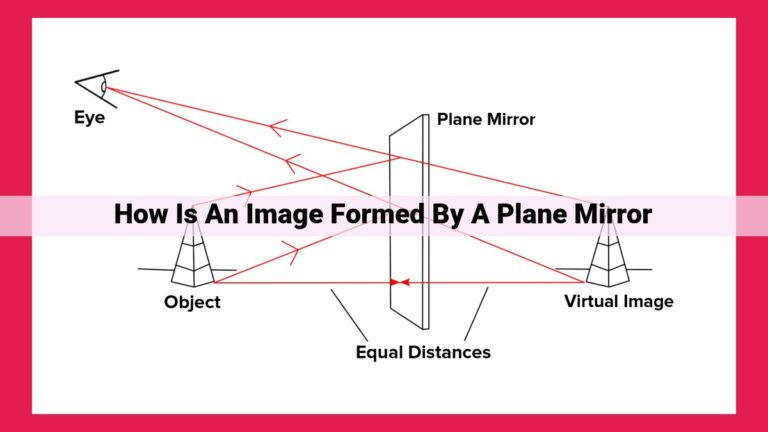Cost Of Microscopes: A Comprehensive Guide For Different Types And Applications
Microscopes vary widely in price depending on their type, features, and capabilities. Optical microscopes, commonly used in education, can range from under $100 to several thousand dollars based on their magnification and image quality. Electron microscopes, employed in advanced research, are significantly more expensive, typically costing tens of thousands to millions of dollars. Specialized microscopes, such as scanning probe microscopes, may also require substantial investments. Ultimately, the price of a microscope reflects the desired level of detail, functionality, and application area.
A Comprehensive Guide to the Types of Microscopes
Microscopy has revolutionized our understanding of the world around us, allowing us to explore the unseen and unravel the secrets of the microscopic realm. From towering biological marvels to the tiniest nanoparticles, microscopes empower us to visualize and study a vast array of objects, each type tailored to reveal distinct aspects of the hidden world.
Optical Microscopes: Illuminating the Microscopic World
Optical microscopes, the most common type, harness the power of light to magnify objects. They consist of lenses, which gather and focus light to create an enlarged image of the specimen. These microscopes are instrumental in various fields, from biology to geology, offering magnifications that range from 10x to 1000x, or even higher with specialized techniques.
Electron Microscopes: Delving into the Nanoworld
Electron microscopes employ electron beams instead of light, granting us unprecedented resolution and magnification capabilities reaching millions of times. They have unlocked the mysteries of cellular structures, revealing intricate details of viruses, proteins, and even atoms. Electron microscopy has revolutionized fields such as medicine, materials science, and semiconductor manufacturing.
Scanning Probe Microscopes: Unveiling Surface Topography
Scanning probe microscopes (SPMs) scan surfaces using a sharp probe to map their topography. SPMs offer exceptional 3D imaging capabilities, enabling the visualization of surface features down to atomic dimensions. These microscopes are essential in nanotechnology, materials characterization, and biological research.
Matching Your Needs with the Right Microscope
The type of microscope you choose depends on the size, structure, and nature of the specimen you wish to study. Optical microscopes excel at observing living specimens and larger structures, while electron microscopes are ideal for ultra-high magnification and subcellular details. SPMs provide unparalleled surface imaging capabilities.
By understanding the capabilities of different types of microscopes, you can make an informed decision that aligns with your research or educational goals. Embark on your microscopic journey, unraveling the secrets of the world around us, one magnified image at a time.
Magnification and Resolution: Unlocking the Invisible World
Microscopy, the art of magnifying tiny objects, has revolutionized our understanding of the world. Magnification is the process of enlarging an image, while resolution refers to the level of detail that can be distinguished. Both are crucial elements in microscopy, allowing us to explore the hidden realms of the microscopic world.
Types of Magnification
- Image magnification: The ratio of the size of the image to the actual size of the object.
- Optical magnification: The magnification produced by the lenses of the microscope.
- Digital magnification: The magnification achieved by using digital processing techniques, such as zooming in on a computer screen.
Importance of Resolution
Image resolution is equally important as magnification. Optical resolution is the ability of a microscope to distinguish between two closely spaced objects. Contrast resolution refers to the ability to differentiate between areas of different brightness or color.
Resolution is vital because it determines the level of detail that can be observed. For instance, a microscope with high optical resolution allows us to see the fine structures of cells, while a microscope with high contrast resolution enables us to distinguish between different cell types based on their brightness or color.
The Relationship Between Magnification and Resolution
While magnification increases the size of the image, it does not necessarily improve resolution. In fact, excessive magnification can lead to a blurry image known as empty magnification.
The key is to achieve an optimal balance between magnification and resolution. A microscope with high magnification but low resolution will produce a large but indistinct image. Conversely, a microscope with high resolution but low magnification will produce a clear but small image.
Choosing the Right Microscope for Your Needs
When selecting a microscope, consider the magnification and resolution requirements for your specific application. For biological research, a microscope with high magnification and resolution is essential for observing cellular structures. Educational microscopes, on the other hand, may prioritize affordability and ease of use over advanced features.
Remember, magnification and resolution are the keys to unlocking the hidden world of the microscopic. By understanding their concepts and importance, you can choose the right microscope for your needs and embark on a journey of scientific discovery.
Features and Specifications: Key Considerations for Microscope Selection
When embarking on the journey of selecting the ideal microscope, technical specifications play a pivotal role in guiding your decision. Magnification range and resolution determine the level of image detail you can capture, while illumination and stage design directly influence the clarity and usability of the microscope.
Magnification Range:
The magnification range of a microscope, typically expressed in multiples of 100x (e.g., 400x, 1000x), determines the extent to which an image can be enlarged. Higher magnification enables you to scrutinize finer structures, such as cellular components and microorganisms. However, it’s crucial to note that excessive magnification can compromise image quality, so selecting the appropriate magnification for your specific application is essential.
Resolution:
Resolution, measured in micrometres (μm), refers to the microscope’s ability to distinguish between closely spaced objects or details. A lower resolution may blur the boundaries between objects, while higher resolution provides sharper, more distinct images. Higher resolution is particularly important for visualizing small or complex structures, such as biological samples or electronic circuits.
Illumination:
The type and intensity of illumination directly impact image quality. Transmitted light passes through the specimen from below, highlighting internal structures, while reflected light bounces off the specimen’s surface, revealing surface details. LED and halogen bulbs are common illumination sources, providing bright and consistent lighting.
Stage Design:
The stage, where the specimen is placed, plays a crucial role in ease of use and image stability. A mechanical stage allows for precise movement of the specimen in all directions, facilitating smooth specimen manipulation. Built-in illumination beneath the stage can enhance contrast and clarity, especially for transparent specimens.
Imaging Capabilities and Ergonomics:
Modern microscopes not only capture images but also offer advanced imaging capabilities. Digital cameras allow for easy image capture, storage, and analysis. Software for image processing enhances image quality and enables measurements and annotations. Ergonomic design includes comfortable eyepieces, adjustable height, and ample working space, minimizing fatigue during prolonged use.
Brand and Reputation: The Hallmark of Quality in Microscopy
When selecting a microscope, the reputation of the manufacturer is paramount. This reputation is often reflected in the company’s market share, which indicates the number of units sold relative to competitors. A high market share signifies a track record of customer satisfaction and trust.
Several notable brands have earned a stellar reputation in the microscopy industry. Zeiss, Olympus, Leica, Nikon, and Bruker are just a few examples of manufacturers known for their **high-quality instruments and exceptional support. These companies have spent years meticulously crafting their products to meet the exacting demands of scientists and researchers worldwide.
The reputation of a brand is built on unwavering principles and a commitment to excellence. It reflects the company’s dedication to innovation, rigorous engineering, and superior customer service. Choosing a microscope from a reputable brand ensures that you are investing in a **reliable and proven performer that will support your research endeavors for years to come.
The Strength Behind the Lens: Construction and Durability of Microscopes
When it comes to selecting a microscope, durability and reliability are not just buzzwords; they are crucial factors that will significantly impact the longevity and performance of your instrument.
Just as a sturdy foundation is essential for a long-lasting building, the construction materials of a microscope play a pivotal role in its ability to withstand daily use, environmental factors, and accidental bumps. Microscopes designed with high-quality materials, such as metal alloys and composite plastics, offer superior durability and resistance to wear and tear. These materials can endure the rigors of heavy-duty applications, ensuring that your microscope remains a reliable companion for years to come.
It’s not just the materials but also the craftsmanship that matters. A microscope meticulously assembled with precision engineering and rigorous quality control will exhibit exceptional mechanical stability and optical alignment. This ensures that your images remain sharp, clear, and consistent even over extended periods of operation.
Durability extends beyond the main structure of the microscope to include its components. Look for instruments with high-quality optics, robust illumination systems, and ergonomic controls. These components are the workhorses of the microscope, and their durability directly affects the image quality, ease of use, and overall lifespan of the instrument.
By investing in a microscope with exceptional construction and durability, you are not only ensuring its longevity but also safeguarding the integrity of your research. A reliable microscope will provide you with accurate and consistent results, enabling you to make informed conclusions and advance your understanding in various fields of science.
Applications of Microscopes: Unlocking the Microscopic World
Microscopes, the unsung heroes of scientific discovery, play a pivotal role in exploring the hidden wonders of the microscopic realm. Their applications span myriad fields, revolutionizing our understanding of the world around us.
Biology: Unveiling the Secrets of Life
Biologists rely on microscopes to delve into the intricate machinery of cells. Optical microscopes provide detailed views of cellular structures, organelles, and chromosomes, enabling researchers to study cell division, genetic processes, and the behavior of microorganisms. Electron microscopes take us even deeper, revealing the ultrastructure of cells, viruses, and molecules.
Chemistry: Visualizing the Molecular World
Chemists employ microscopes to investigate the properties and behavior of molecules. Scanning probe microscopes allow scientists to image the topography and electronic structure of surfaces, providing insights into chemical reactions, catalysis, and materials science. Confocal microscopes enable the visualization of three-dimensional structures, aiding in drug discovery and the study of complex biological systems.
Medicine: Diagnosis and Treatment on a Microscopic Scale
In the realm of medicine, microscopes are indispensable tools for diagnosis and treatment. Light microscopes are used to examine blood and tissue samples, helping doctors detect infections, identify abnormal cells, and guide surgical procedures. Fluorescence microscopes utilize fluorescent dyes to highlight specific structures within cells, aiding in the diagnosis of genetic disorders and cancer. Electron microscopes reveal the ultrastructure of pathogens, allowing for precise identification and targeted treatment strategies.
Beyond the Laboratory: Education and Exploration
Microscopes are not confined to research labs; they also serve as valuable teaching tools in classrooms. Educational microscopes simplify complex biological and chemical concepts, making them accessible to students of all ages. Additionally, amateur enthusiasts of microscopy embark on fascinating explorations of the microscopic world, discovering the beauty and diversity of microorganisms, plants, and minerals.
The applications of microscopes are boundless, spanning scientific research, education, and medical diagnostics. From unraveling the mysteries of life to diagnosing diseases and shaping new technologies, microscopes empower us to see the unseen and push the boundaries of our knowledge. As we continue to refine and innovate these remarkable tools, the possibilities for unlocking the secrets of the microscopic world remain endless.
Accessories and Expandability: Enhancing Microscope Functionality and Versatility
Microscopes, as powerful tools in various scientific and medical fields, offer a world of possibilities. However, their capabilities can be further extended by incorporating a range of essential accessories. These enhancements not only elevate the performance of the microscope but also broaden its applications, allowing researchers, students, and professionals to delve deeper into the microscopic realm.
Essential Accessories for Enhanced Microscopy
-
Lenses: Microscopes come with objective lenses of varying magnifications, enabling users to zoom in and out of specimens. Additional lenses, with specific magnifications and specialized properties, can further enhance the observation experience. For instance, immersion oil lenses provide unparalleled resolution for high-magnification imaging.
-
Filters: Filters are crucial accessories that control the light passing through the microscope, influencing image contrast and clarity. Color filters can isolate specific wavelengths, improving the visibility of certain structures, while polarizing filters reduce glare and enhance the differentiation of birefringent materials.
-
Cameras: Digital cameras, attached to the microscope, enable the capture and storage of high-quality images and videos. These images can be analyzed, shared, and used for documentation purposes, facilitating collaboration and knowledge dissemination. Advanced cameras also allow for time-lapse imaging, capturing dynamic processes over extended periods.
Versatility and Applications
Accessories empower microscopes to adapt to diverse research and diagnostic needs. By adding specialized attachments, microscopes can perform a variety of advanced techniques:
-
Fluorescence microscopy: Fluorescent probes are used to label specific structures within cells, allowing researchers to visualize and track their behavior. Fluorescence microscopes, equipped with appropriate filters and excitation light sources, enable the study of cellular dynamics, protein interactions, and gene expression.
-
Confocal microscopy: This technique employs a focused laser beam to generate high-resolution, three-dimensional images. Confocal microscopes are ideal for imaging thick specimens and capturing intricate details, such as the morphology of neurons or the organization of tissues.
-
Electron microscopy: Electron microscopes use a beam of electrons instead of light, providing unparalleled magnification and resolution. They unveil the ultrastructure of cells, revealing organelles, molecular complexes, and even individual atoms. Electron microscopy is indispensable in fields like nanotechnology and materials science.
Accessories and expandability transform microscopes into versatile tools that unlock the potential for groundbreaking discoveries. By enhancing functionality and adaptability, they empower users to explore the microscopic world with greater depth, precision, and efficiency. Whether it’s capturing images for documentation or performing advanced imaging techniques, accessories empower microscopes to meet the demands of diverse research and diagnostic endeavors.
Warranty and Support: Securing Peace of Mind
When investing in a microscope, warranty coverage and support are crucial considerations. A comprehensive warranty safeguards your investment, providing peace of mind knowing that you’re covered in case of unexpected breakdowns or malfunctions. Pay close attention to the terms and conditions, including the duration of coverage, what’s included, and any exclusions.
Equally important is the availability of maintenance and repair services offered by the manufacturer. A reputable manufacturer will provide prompt and reliable support, ensuring minimal downtime and hassle in case of any issues. Look for companies with a network of authorized service centers or in-house repair facilities.
By securing a robust warranty and reliable support, you can ensure your microscope will continue to serve your research or diagnostic needs for years to come. It’s an investment in peace of mind and the long-term productivity of your valuable instrument.
Price Range and Value: A Guide to Microscope Investment
In the realm of scientific exploration, microscopes serve as invaluable tools, unlocking a hidden world of intricate structures and microscopic phenomena. Navigating the diverse price ranges of microscopes can be a daunting task, but understanding the value proposition associated with each tier can empower you to make an informed decision that aligns with your research or educational needs.
Microscopes: A Spectrum of Costs
The microscope market offers a broad range of price options, catering to varying budgets and requirements. From affordable models designed for basic observations to high-end instruments tailored for advanced research, there’s a microscope to suit every application and pocketbook.
Value Proposition: Striking the Balance
Choosing the right microscope is not solely about acquiring the most expensive model but finding the optimal balance between capability and affordability. Affordable microscopes typically suffice for introductory courses or hobbyist pursuits, offering a cost-effective entry point into the field of microscopy. Mid-range models provide a significant upgrade in optical performance and versatility, making them suitable for higher-level education and entry-level professional use.
Investing in Precision: High-End Microscopes
For researchers and professionals seeking unparalleled precision and imaging capabilities, high-end microscopes represent the pinnacle of optical technology. These instruments offer superior optical resolution, advanced imaging techniques, and customizable configurations, enabling groundbreaking discoveries and cutting-edge scientific advancements. However, their higher price tags reflect the exceptional level of performance they deliver.
Return on Investment: Quantifying Value
The value of a microscope extends beyond its purchase price. Consider the return on investment (ROI) associated with each price range. Affordable microscopes offer a low initial cost with a more limited ROI due to their basic functionality. Mid-range models provide a balance between affordability and performance, delivering a higher ROI over time as they support more advanced applications. High-end microscopes command a premium price but often generate an exceptional ROI through their enhanced capabilities and reputation for excellence.
Selecting the right microscope is a journey of discovery that begins with understanding your specific needs and budget constraints. By carefully considering the value proposition and return on investment associated with each price range, you can make an informed choice that empowers your scientific endeavors and maximizes the impact of your microscopy investment. Whether you’re a budding scientist, a seasoned researcher, or an enthusiastic hobbyist, there’s a microscope out there that will illuminate your path of discovery.





